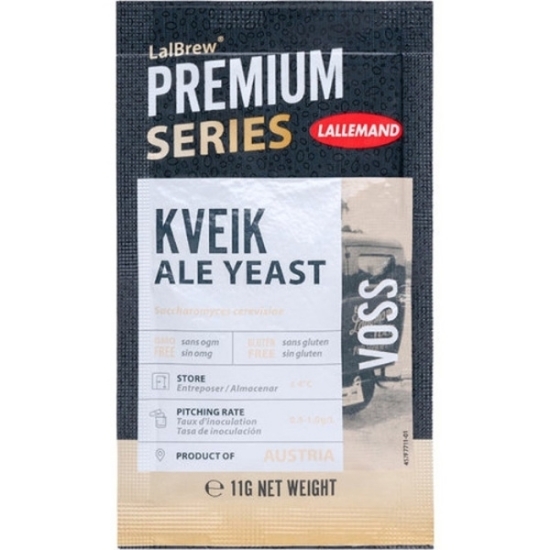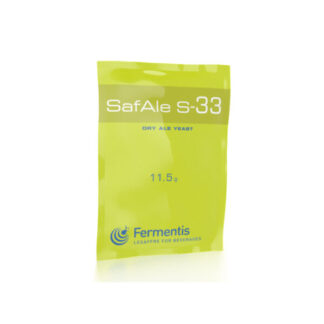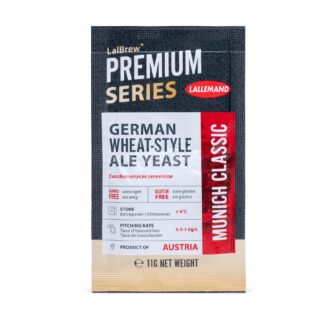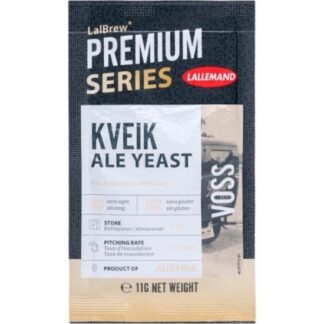Description
Kveik is a Norwegian word meaning yeast. In the Norwegian farmhouse tradition, kveik was preserved by drying and passed from generation to generation. Kveik is the original, traditional dried yeast!
The LalBrew Voss™ strain was obtained from Sigmund Gjernes (Voss, Norway), who has maintained this culture using traditional methods since the 1980s and generously shared it with the wider brewing community. LalBrew Voss™ supports a wide range of fermentation temperatures between 25-40°C (77-104°F) with a very high optimal range of 35-40°C (95-104°F).
Very fast fermentations are achieved within the optimal temperature range with full attenuation typically achieved within 2-3 days. The flavor profile is consistent across the entire temperature range: neutral with subtle fruity notes of orange and citrus. Flocculation is very high producing clear beers without filtration or use of process aids.
Microbiological Properties
Classified as Saccharomyces cerevisiae, a top fermenting yeast.
Typical Analysis of LalBrew Voss™ yeast:
- Percent solids 93% – 96%
- Viability ≥ 5 x 10 CFU per gram of dry yeast
- Wild Yeast < 1 per 106 yeast cells
- Diastaticus Undetectable
- Bacteria < 1 per 106 yeast cells
Finished product is released to the market only after passing a rigorous series of tests
*See specifications sheet for details
Brewing Properties
In Lallemand’s Standard Conditions Wort, LalBrew Voss™ yeast exhibits:
Fermentation that is completed in:
- 2 days at 40°C (104°F)
- 3-4 days at 30°C (86°F)
- 5-7 days at 25°C (77°F)
Medium to high attenuation and very high flocculation.
Neutral flavor profile across the temperature range with notes of orange and citrus.
The optimal temperature range for LalBrew Voss™ yeast when producing traditional styles is 35-40°C (95-104°F)
Lag phase, total fermentation time, attenuation and flavor are dependent on pitch rate, yeast handling, fermentation temperature and nutritional quality of the wort. Our research suggests that pitching LalBrew Voss™ directly into wort without prior rehydration will often result in better performance including shorter lag-phase and greater attenuation.





